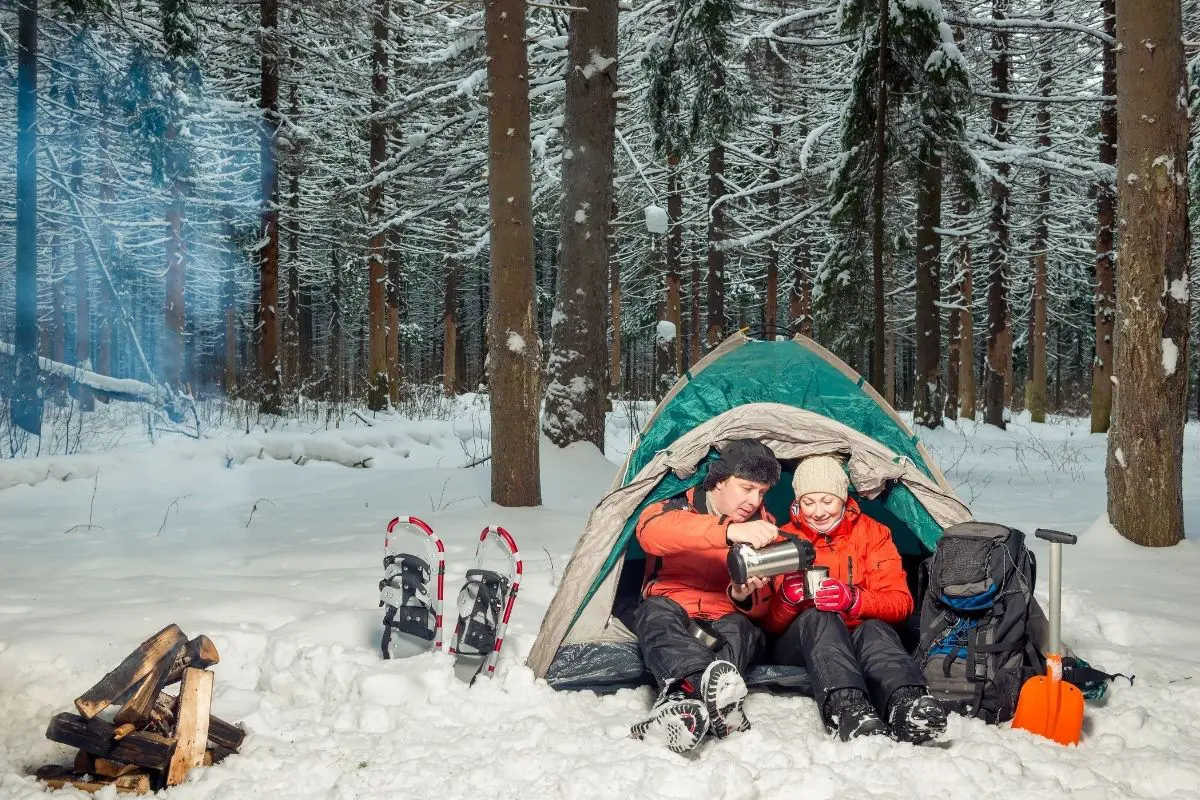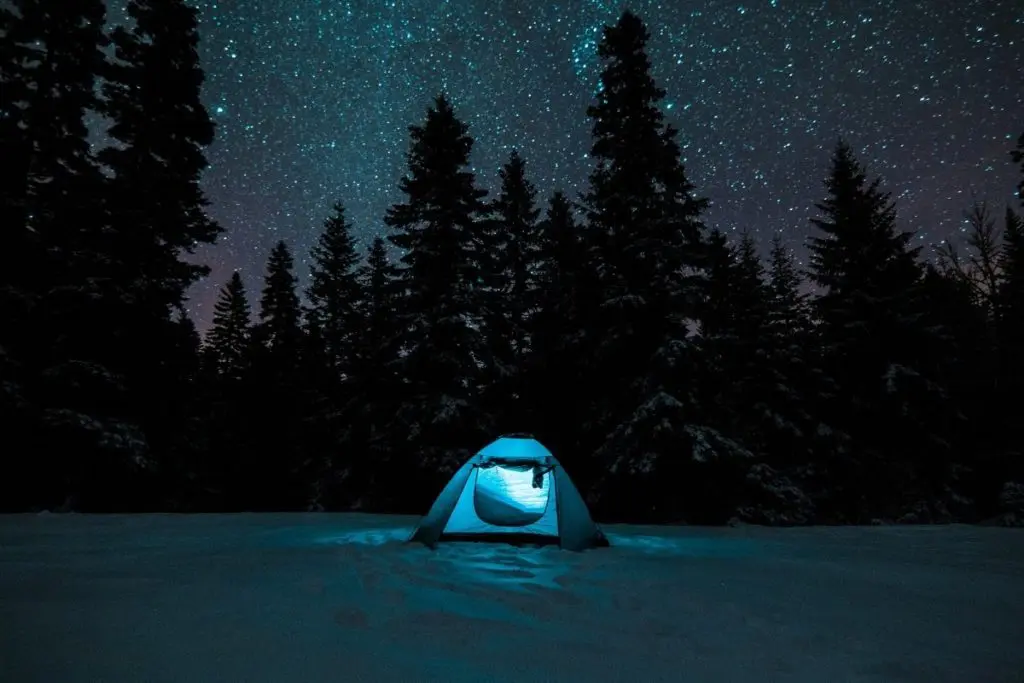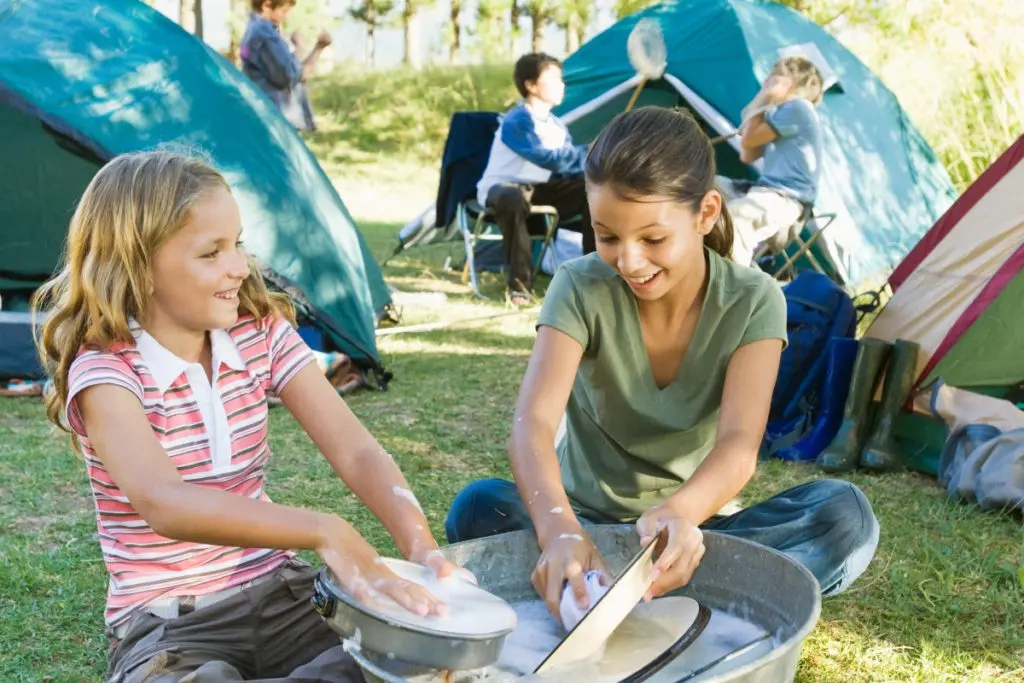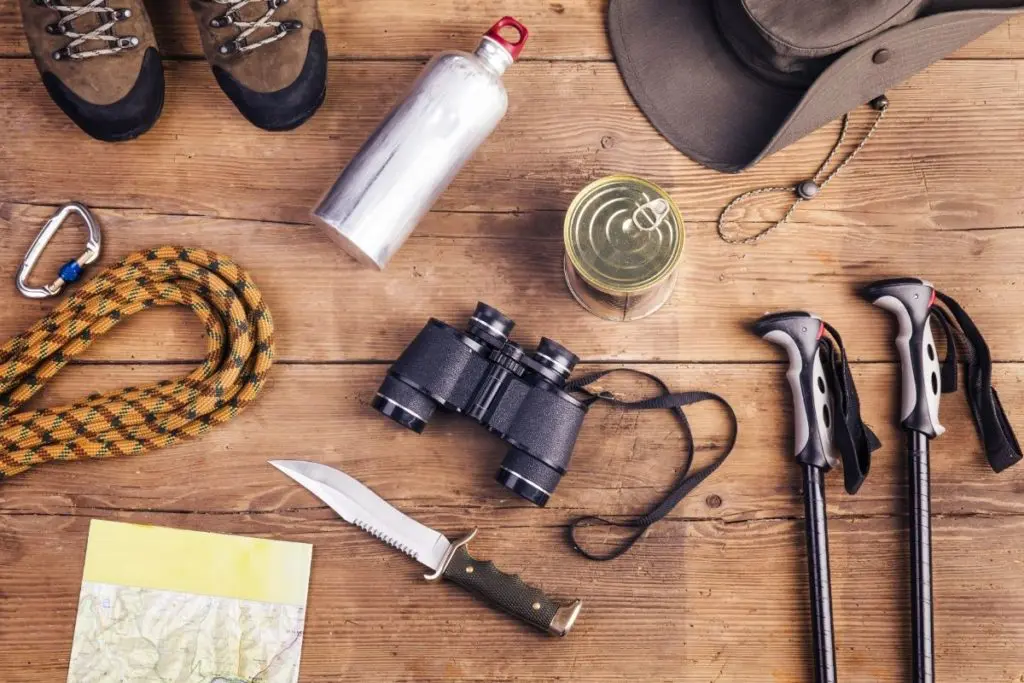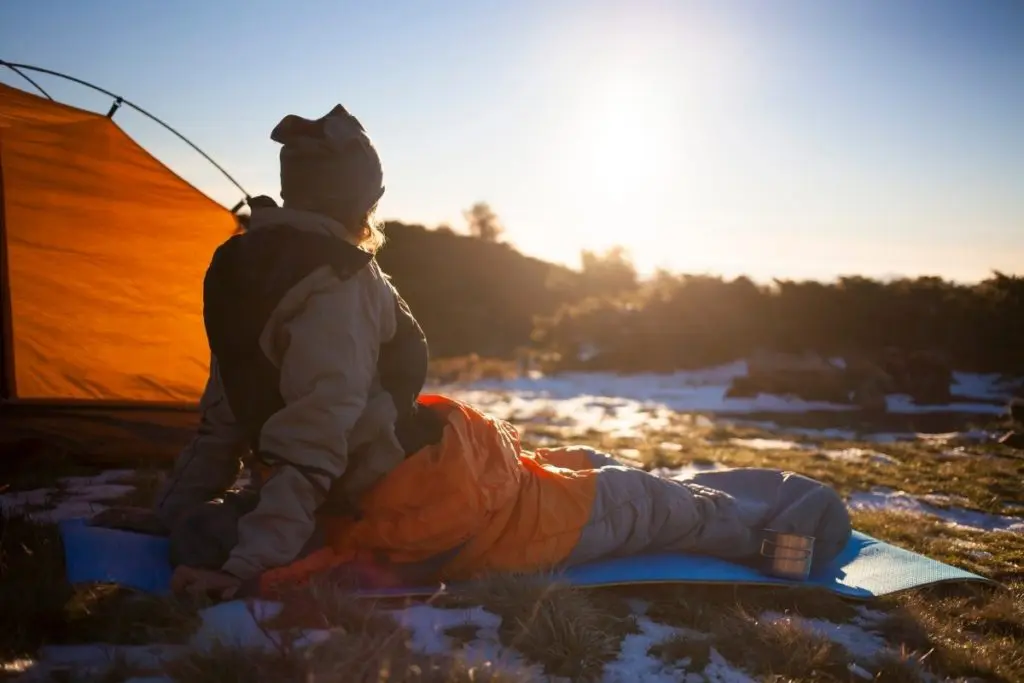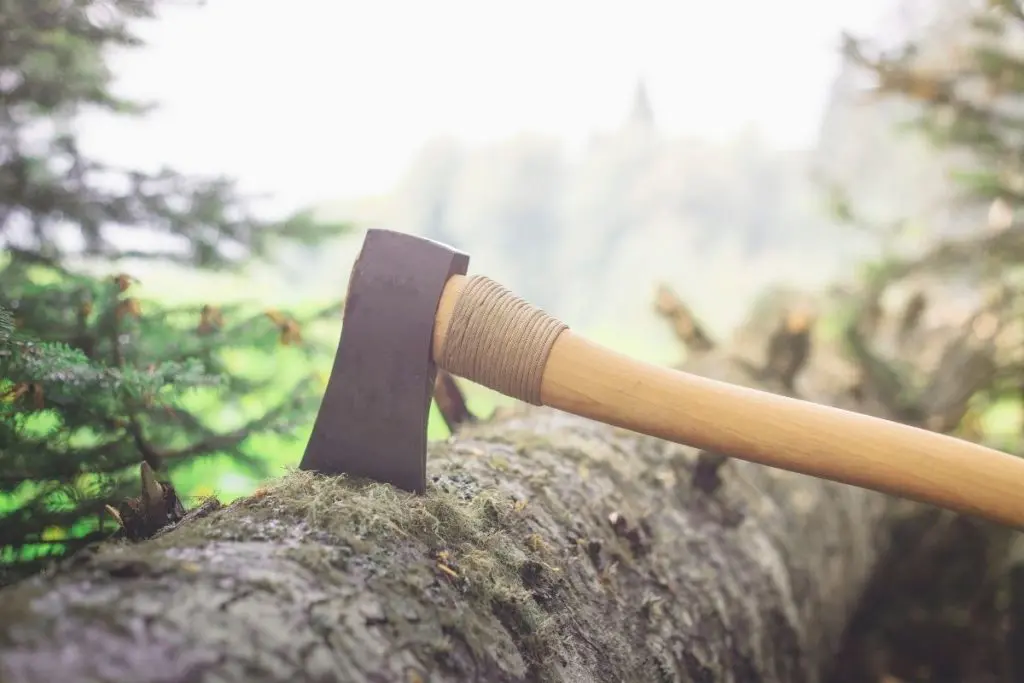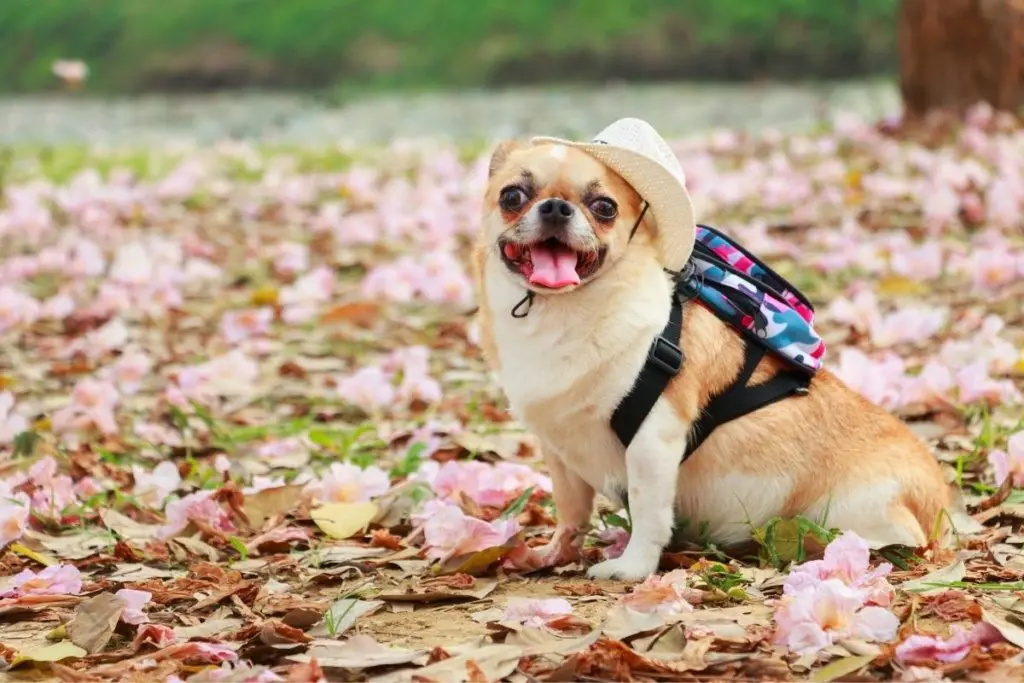Camping is a great way to connect with nature, friends, family, and even yourself. While most people probably think of camping as a strictly spring/summer/fall endeavor, plenty of people take to the great outdoors in winter! And you can, too, with winter camping tips to guide you.
With the technology and gear available nowadays, there’s no reason to let the cold keep you from a relaxing, refreshing vacation. But winter camping can be dangerous if you don’t prepare properly. To help, here are our best winter camping tips and tricks to help keep you and your family safe, comfortable, and having fun on your next outdoor adventure!
10 Winter Camping Tips
In this top 10 list, we’ll take a look at the most critical considerations when prepping for a winter camping trip.
1
Check the Weather
First thing on our list of winter camping tips? Check the weather!
Sure, you know that camping in Colorado in November is going to be cold. But be sure you actually check the weather for the days you’re going to be outside as your trip approaches. If it’s going to snow or ice, you want to be prepared for that. If it’s going to storm, you might even consider rescheduling.
2
Know What to Pack
Though this might be your first foray into winter camping, you probably already have a tried-and-true list of what to bring on a typical camping trip. The basics are pretty much the same, but there are some specialty things you’ll want to add to your arsenal:
- Winter Clothes. This might go without saying, but make sure the clothes you bring are suitable for the weather you’re expecting. Layer, and then layer some more.
- Winter Sleeping Bag. Basically, it’s wise to bring an extra-warm bag designed to retain body heat.
- Winter Camping Tent. A winter camping tent is like a regular tent, but with added insulation to keep out the cold. If you already have a tent and don’t want to fork out the cash for a whole new one, check out our guide on how to insulate a tent for winter camping.
- Heat Source. While an insulated tent will help keep you warm, an electric heater, battery-powered hand warmers, or even a camping stove are great to have on hand.
- Shovel and/or Ice Pick. Depending on just how cold it is where you’re going, it might be a good idea to have a shovel or pick that you can use to move snow and ice around.
- Sunscreen. While this is usually a packing list staple, some campers tend to omit it when planning on spending time in cold weather. But the sun can do just as much damage to your skin when it’s cold outside!
3
Make Sure You Can Walk
This might seem silly — of course you’re going to bring shoes! — but in heavy snow and ice, regular trainers might not cut it. Depending on the weather and terrain that you’re traveling to, you may want to consider specialized hiking boots, snowshoes, skis, or shoe spikes to help you keep even footing.
4
Eat Like A King
Food is probably the first necessity you start planning and makes up a large part of what you bring with you. Summer camping means lots of watermelon, hot dogs, and popcorn, but winter camping should look slightly different.
The best fuel to help your body keep itself warm is high in fiber, complex carbs, and lean protein. Try to get these basics in at every meal, and space those meals out so your body can fight off the cold all day long.
5
Don’t Forget the Water
Most campsites will have a water spigot either at your campsite or only a short walk away, so you’ll always have access. This is important for hydration, cleaning up after dinner, and washing your hands, among other things. But don’t take this accessibility for granted: be sure to check wherever you’re headed to make sure there’s a water source.
Even if there is a water supply, cold weather camping means those pipes could freeze overnight. It’s always a smart idea to bring a few gallons of water with you, or some large containers that you can fill when you get there, so you’re prepared if there’s an emergency.
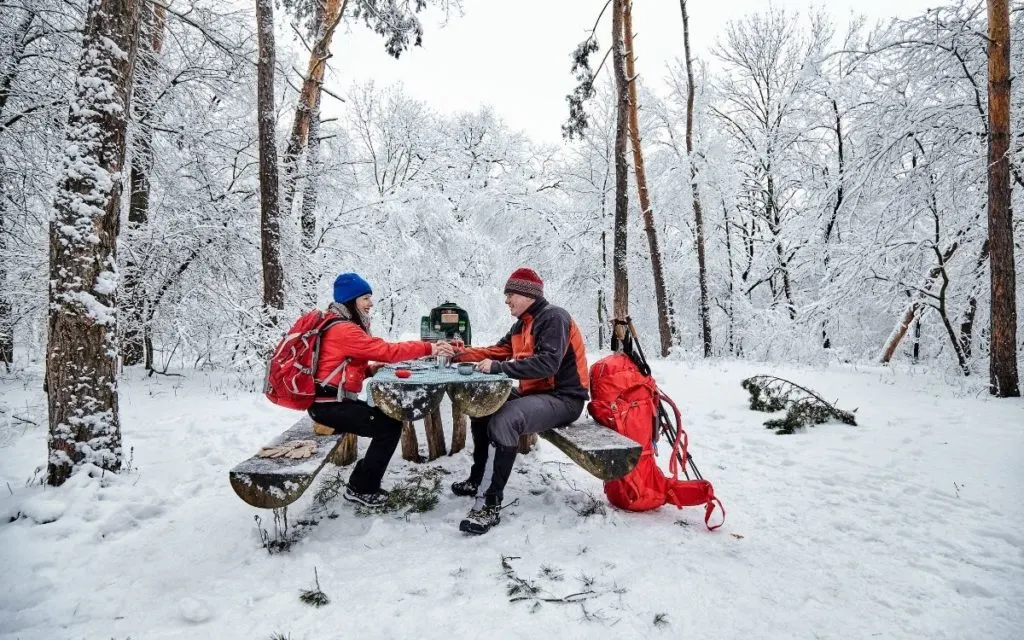
6
Protect Your Water
While we’re on the subject of water, if you’re expecting temperatures nearing or below freezing, be sure to keep your emergency water supply inside your tent. Insulate them in the cold with blankets, clothes, or even your sleeping bag. The last thing you want is your last resort water to be frozen solid right when you need it!
7
Stay Organized
Whether you use storage containers, a label maker, or some kind of system known only to you, keeping all your gear and supplies organized will ensure everything is right where you need it, when you need it.
When it’s below freezing outside, a few seconds exposed to the biting air is like hours. You don’t want to be caught outside your tent forever searching for the cooking stove that you swear was in the trunk when you left.
8
Cover the Ground Under Your Tent
When camping during the warmer months, the main thing you look for in a good tent site is level ground with no sharp objects that will dig into your back at 2 AM. You’ll also want to do this when it’s cold.
Still, an added precaution is to cover the ground with a tarp or other layer of insulation before you start pitching. This helps put another barrier between you and the cold ground, keeping your tent warmer inside.
9
Pack Down the Snow
If your campsite is covered in snow, be sure to pack everything down as tight as you can before you start setting things up.
It might take some time, especially if you’ve got a larger site, but packed snow is a reliable surface to walk and sit on. Loose snow, on the other hand, means you might step to the left and sink down a few inches (or feet!). That might not seem like a big deal, but depending on how you fall, you could twist or break your ankle, land on something sharp or abrasive, or crash into someone else and send them toppling down as well.
10
Fill Up on Fire Starters
A fire is one of the most reliable ways to stay warm, especially in case of an emergency. If your camping stove quits working or you run out of gas, a fire is a great back-up. Matches are the cheapest things to bring, but be sure to pack those in a water-proof case, so they still work if they get dropped in the snow. Flint is a more consistent fire starter because it works even if it gets wet (just wipe it off).
As for tinder, you can use twigs and leaves from around the area, but it’s also a good idea to bring your own. Paper products like newspapers, toilet paper rolls, cardboard, and egg cartons make great tinder. They can usually be found pretty quickly around the house. If you’re in a pinch, potato chips (especially Doritos, for some reason) can also help get your fire going.
So there you have it. We hope these winter camping tips help you and your family stay safe and have the time of your lives on your next adventure!
Further Reading
